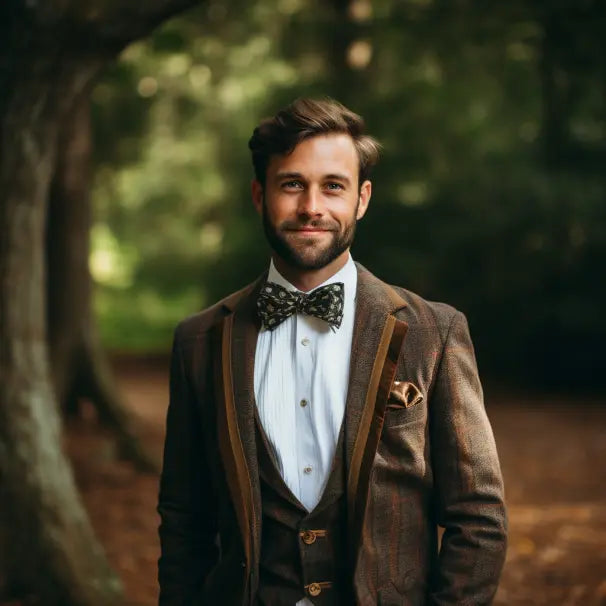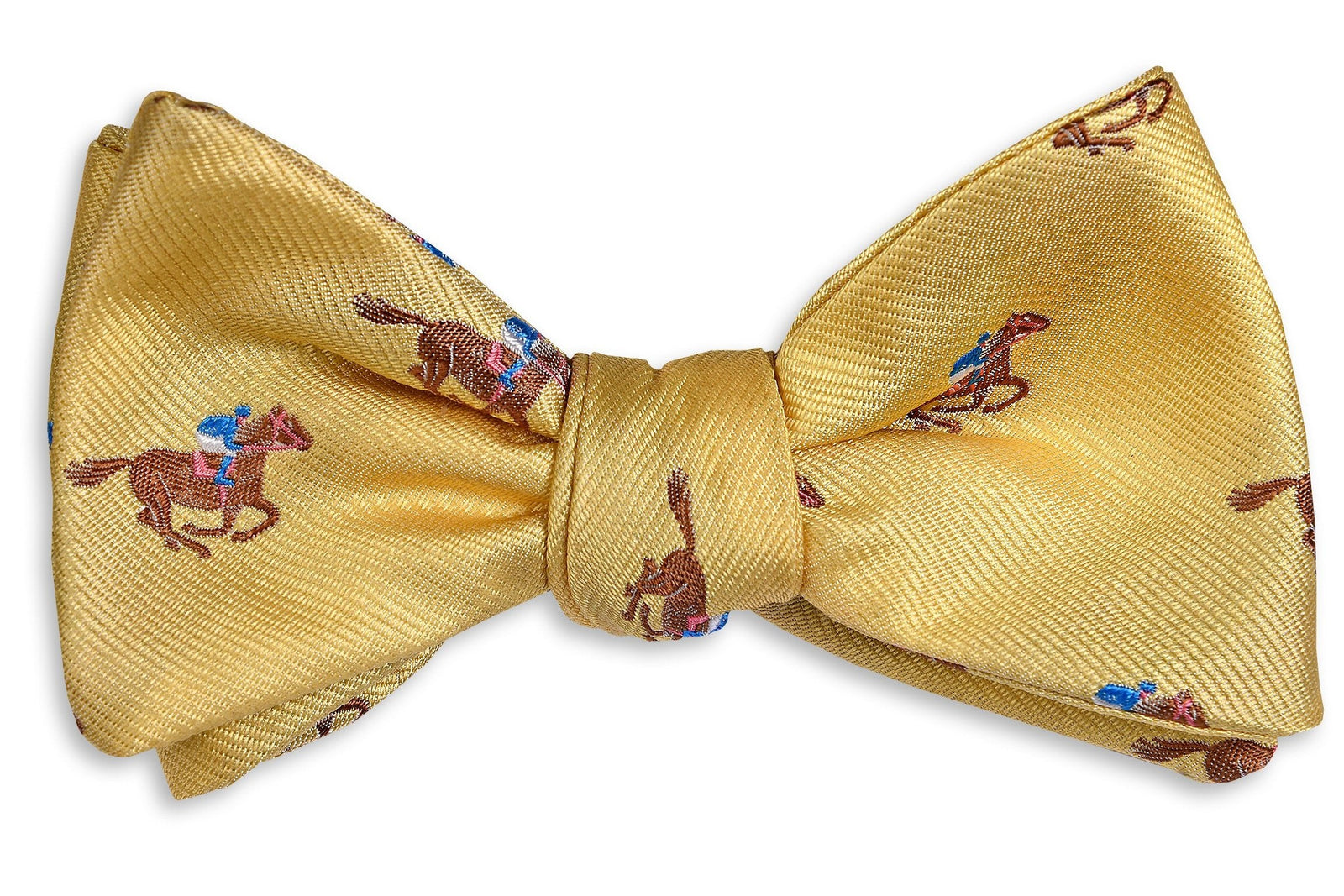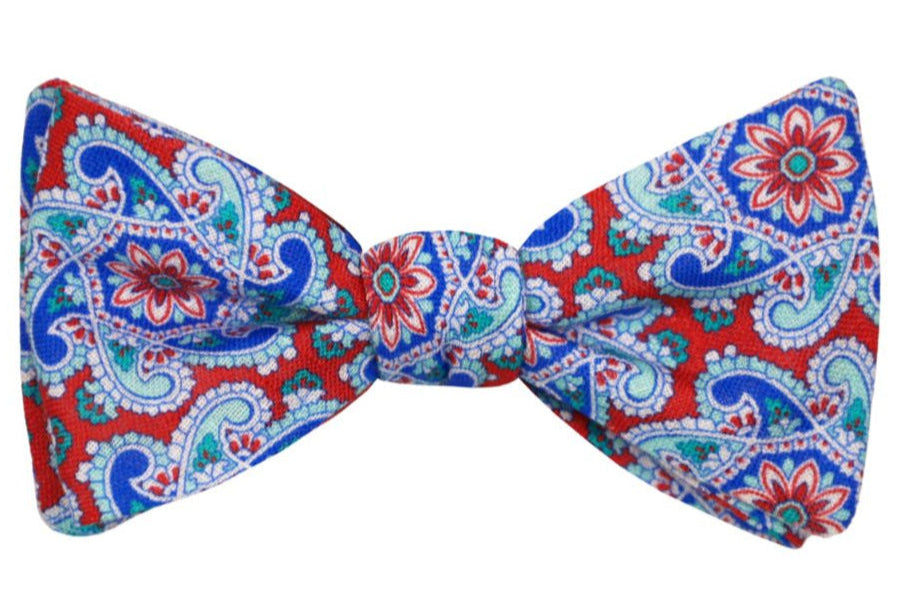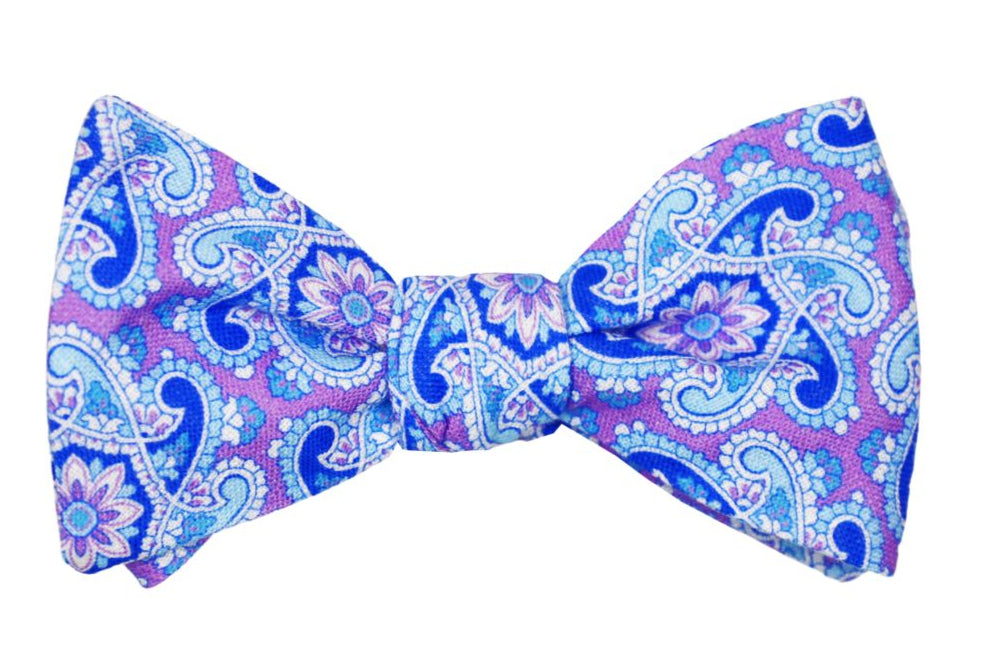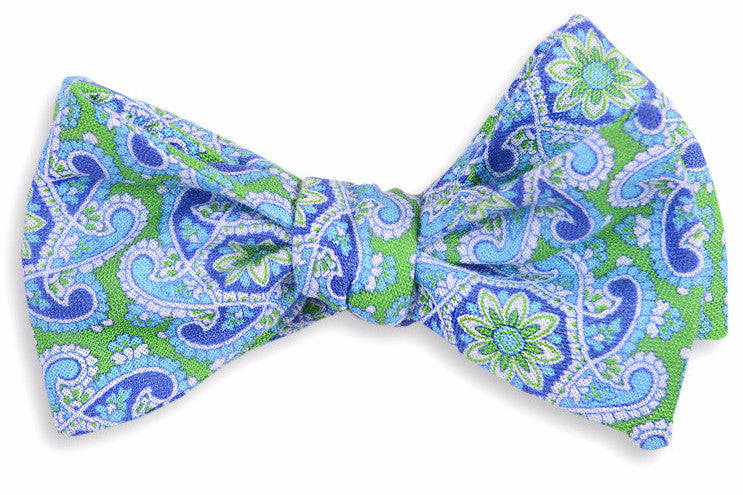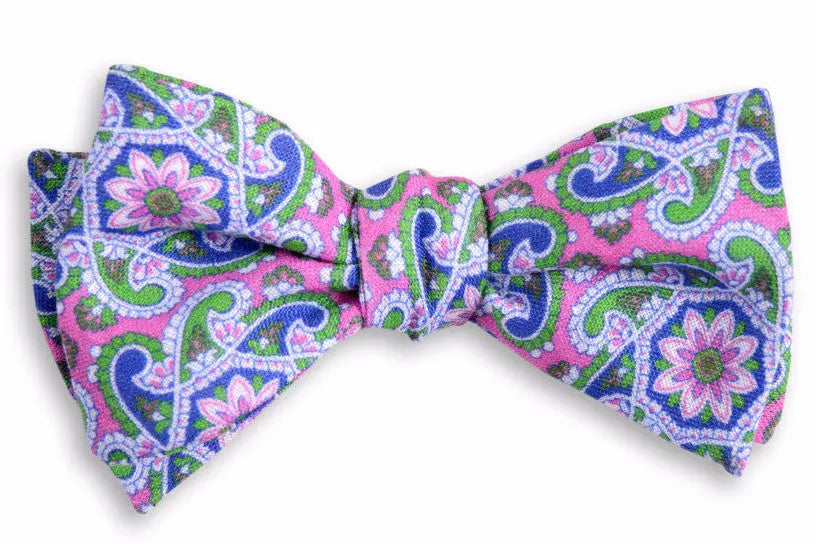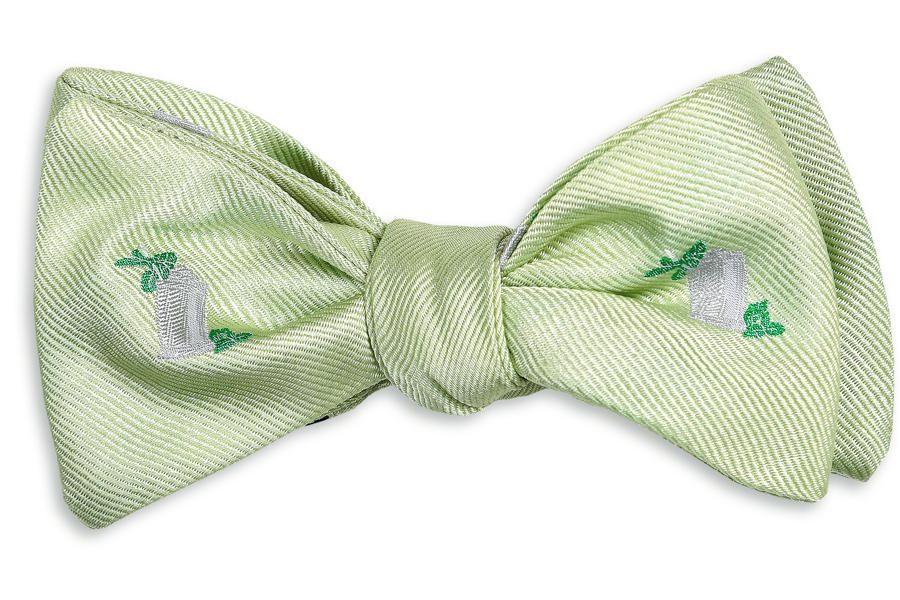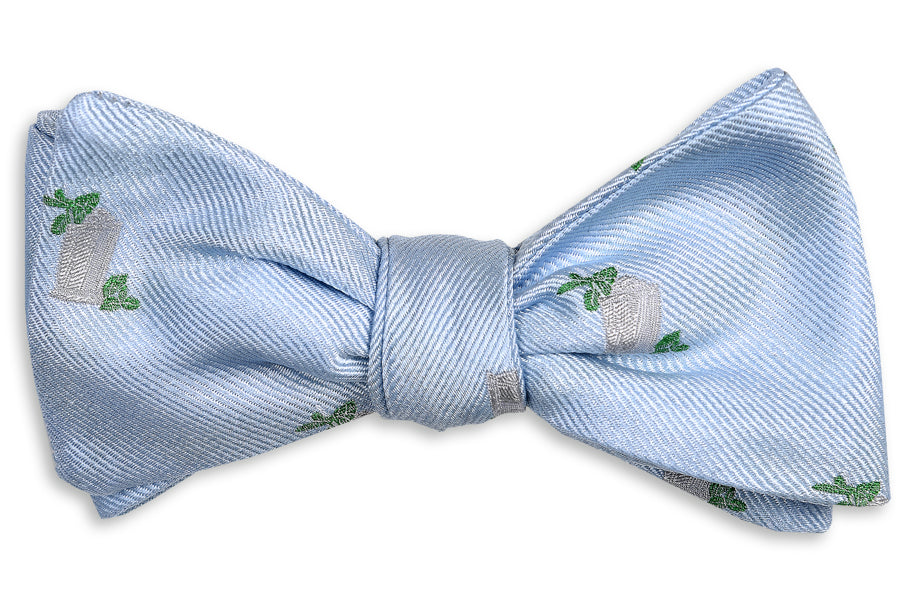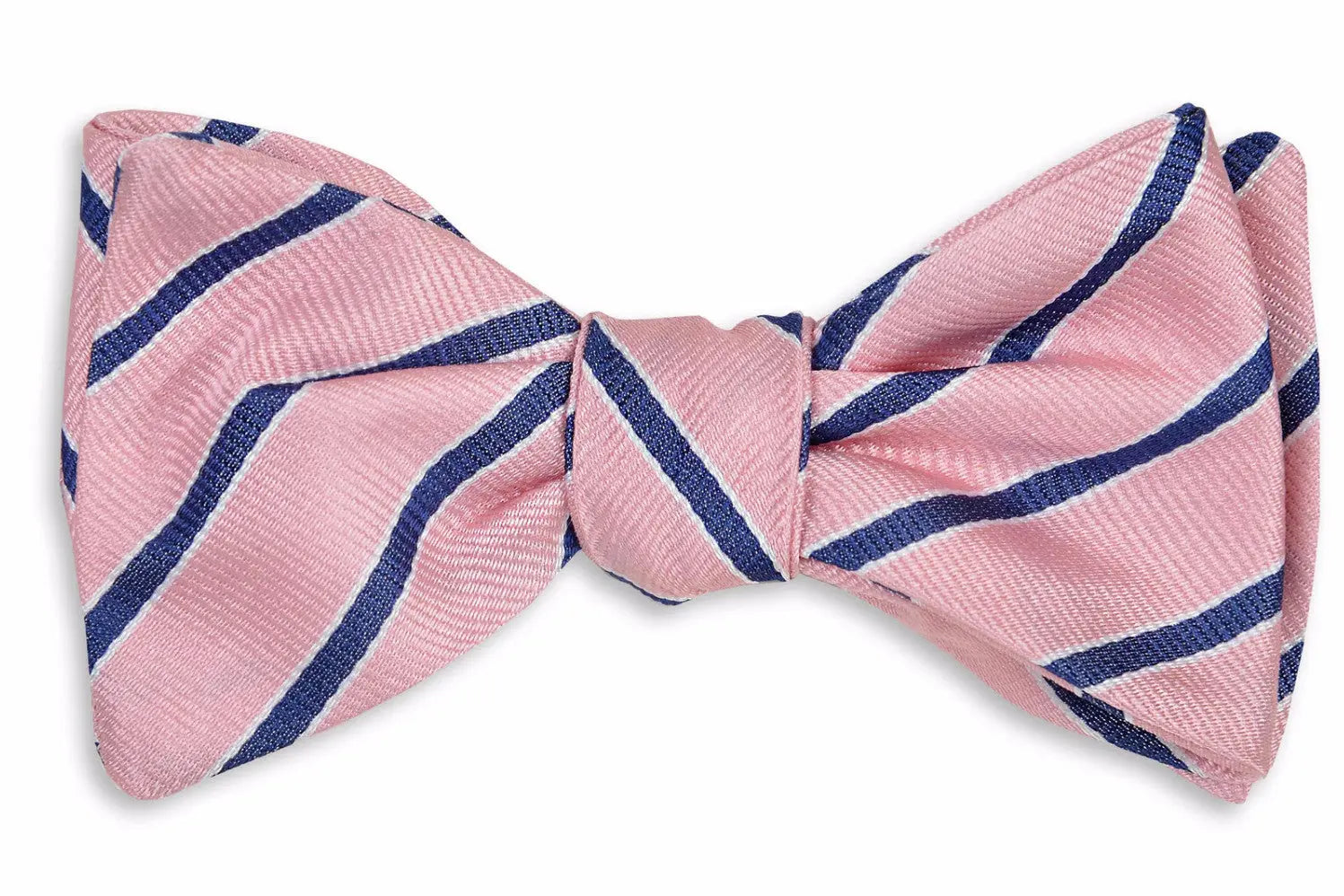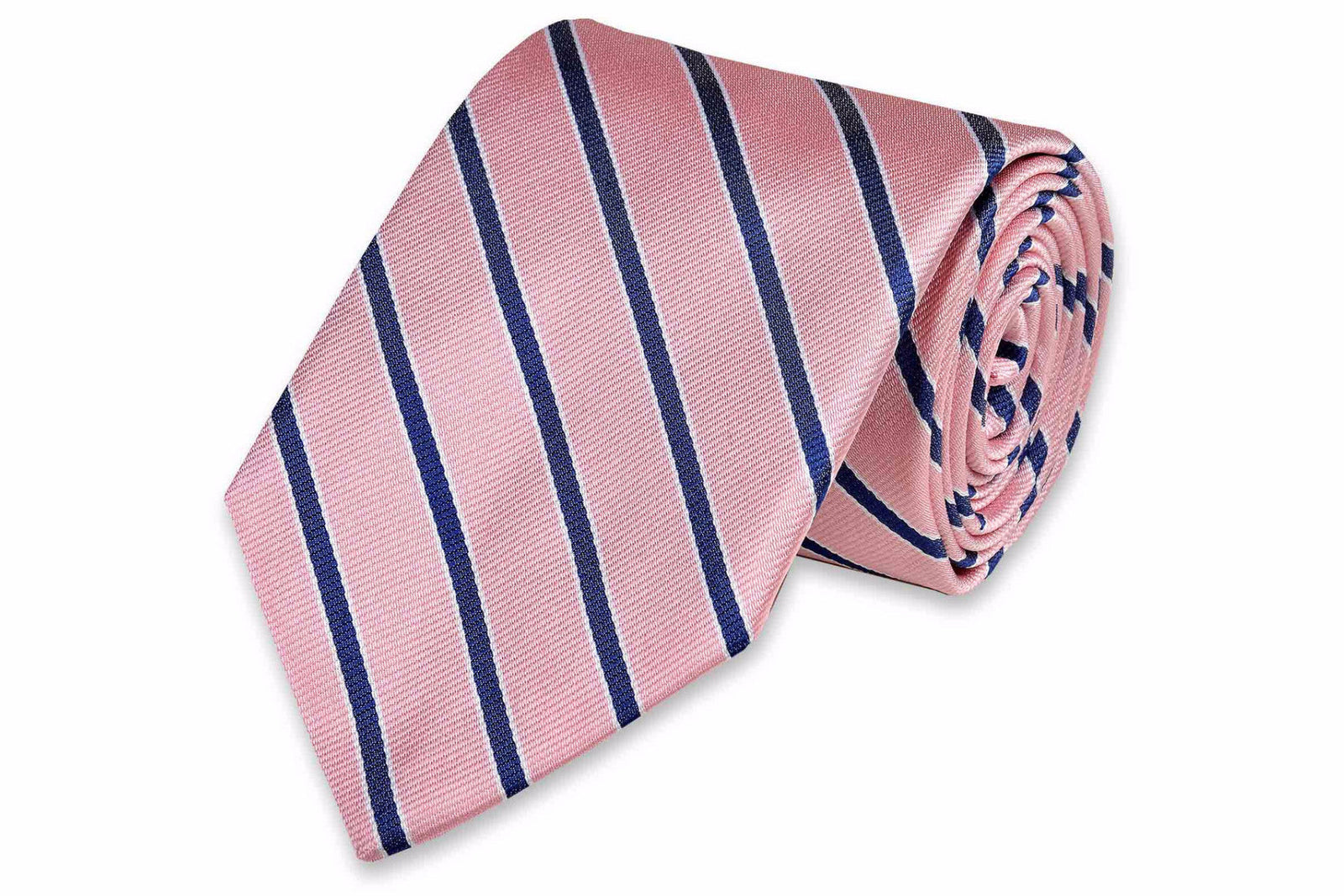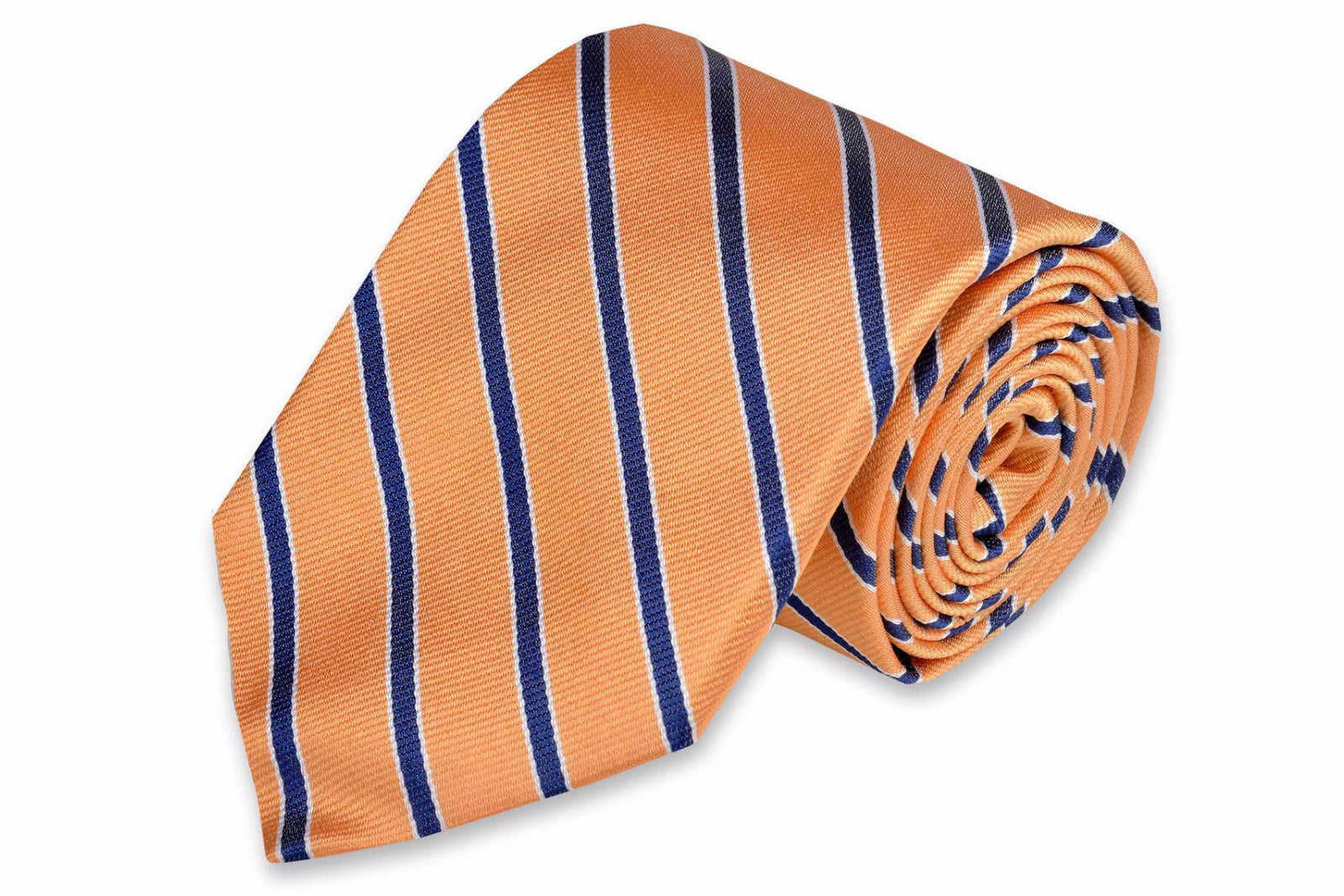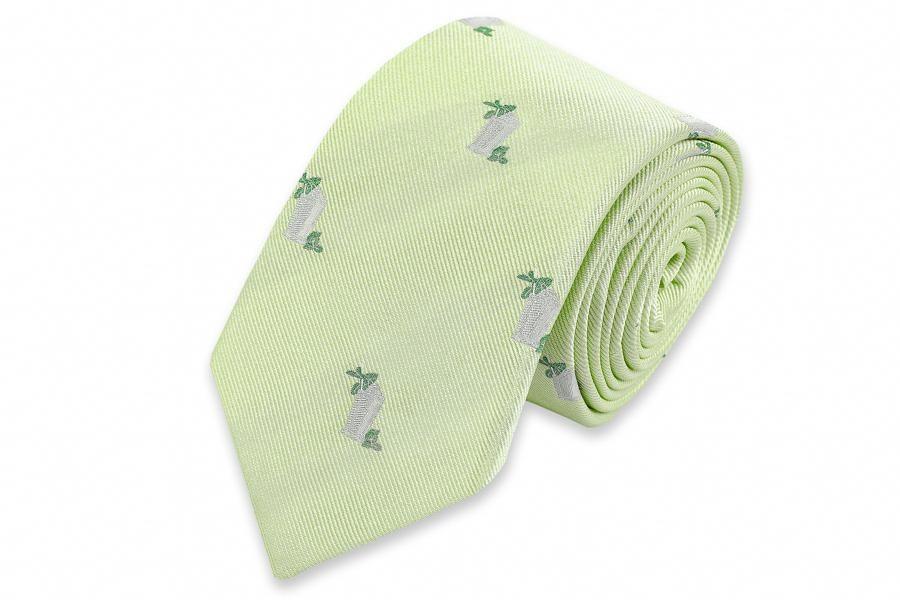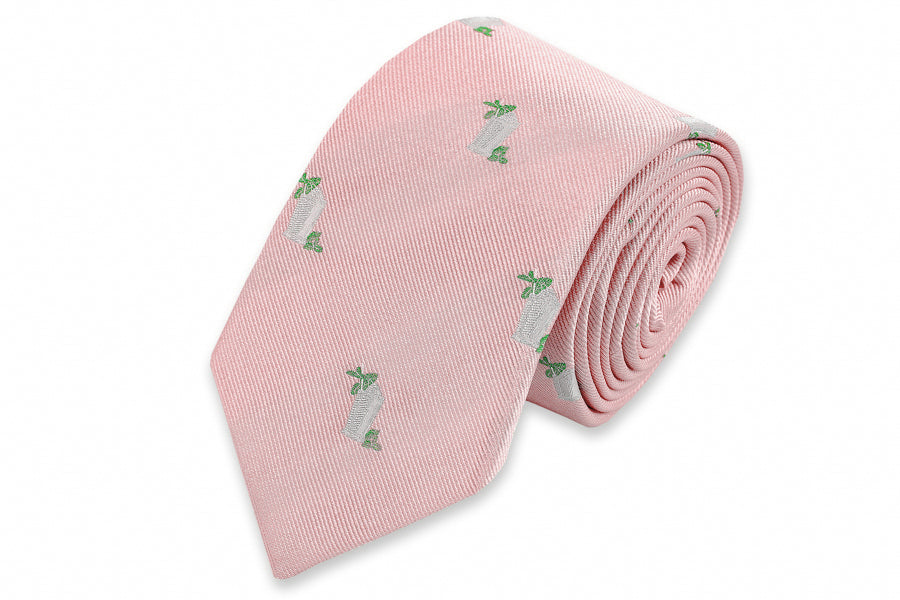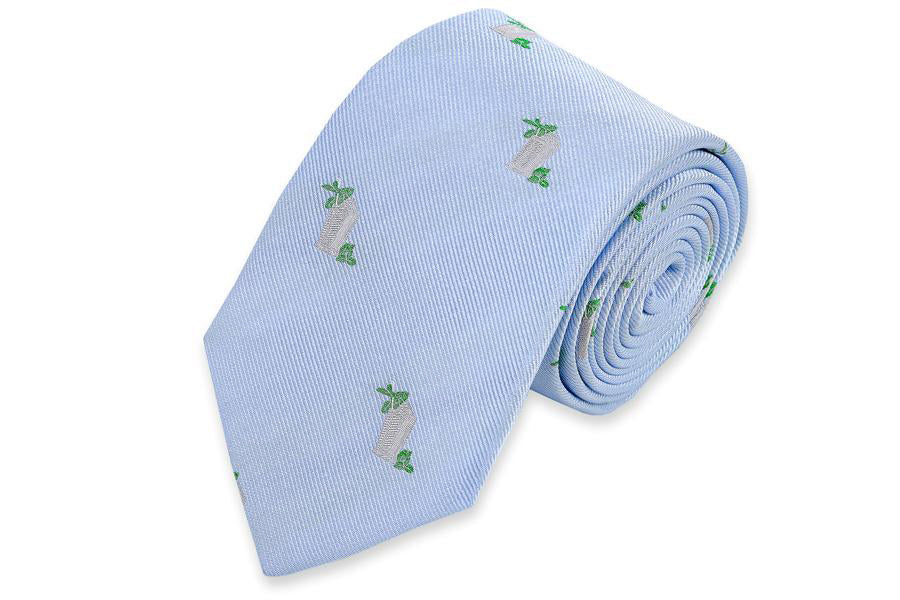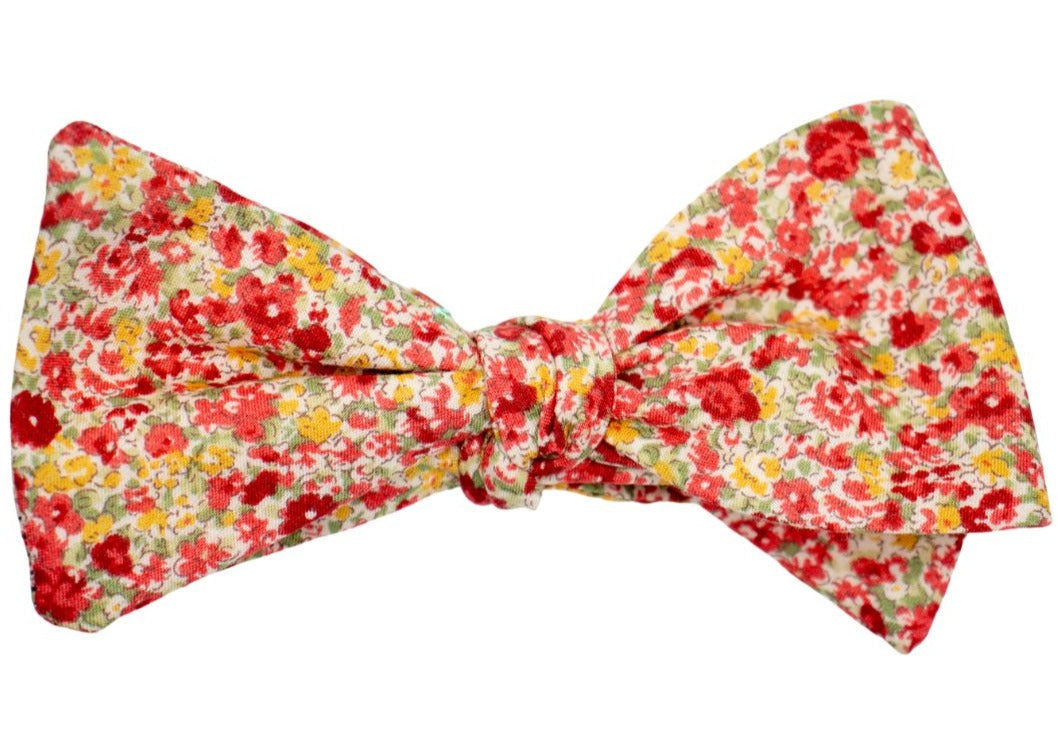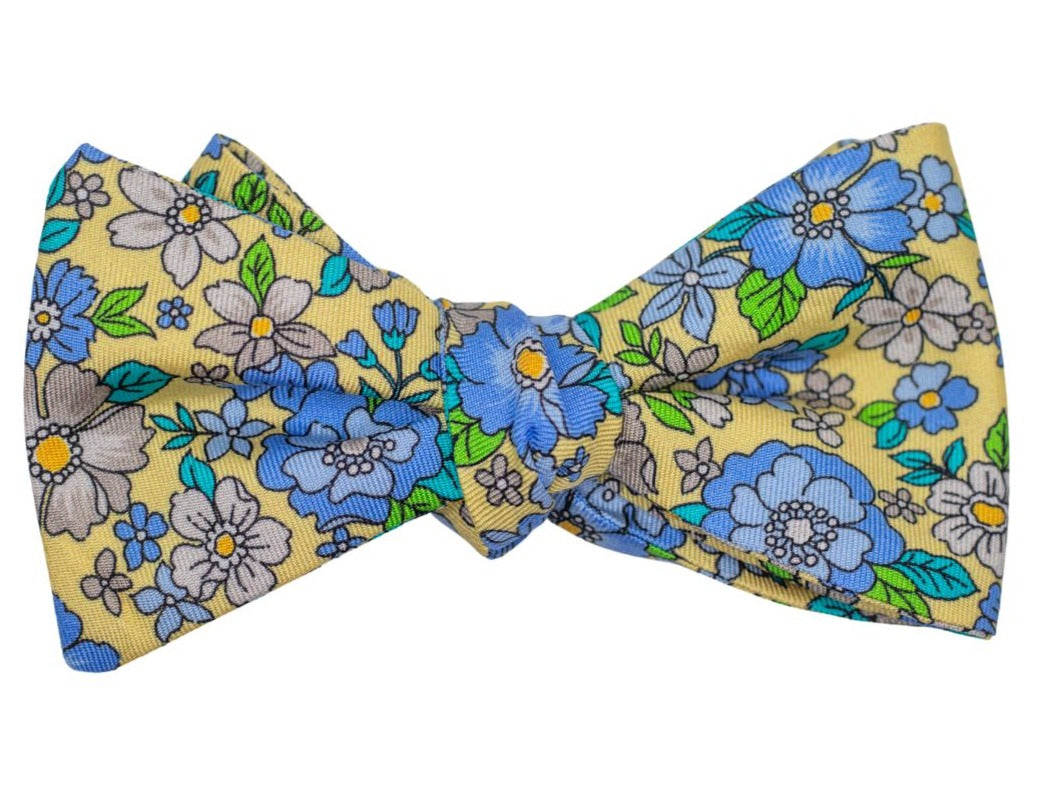In the Southern gentleman's world, bow ties mean etiquette. Every good Southern man always keeps several on hand to express his style. They say something about his devil-may-care attitude and oh-so-chic style.
The bow tie originated from the neckwear worn by Croatian mercenaries during the Thirty Years War in the 17th century, which was later adopted by gentlemen and became known as a cravate, or cravat. It quickly expanded its reach to all gentlemen, becoming a staple of formal wear by the 1880s and surviving well into the modern age.
In addition to its association with formal events and classic elegance, the bow tie symbolizes individuality and non-conformity that has found its way to casual and creative settings. Every personality and occasion can be matched to a bow tie with quirky patterns, vibrant colors, unconventional materials, and innovative designs.
So, without further ado, let's dive into some intricacies of this little gem. Specifically:
Keep reading, gentlemen, to further your finesse in the fine charade of impeccable dressing.
Different Types of Bow Ties
Pre-Tied Bow Tie
Before commenting, let me assure you there is a time and place for every bow tie type. For instance, imagine a young lad attending his first formal affair. A pre-tied bow tie can be a godsend for him. You may be running a tad late - pre-tied bow tie to the rescue!
Self-Tie or Freestyle
For the experienced southern gentleman, the self-tie or 'freestyle' bow tie represents the pinnacle of elegance. There's nothing quite like the gratification of personally tying one's bow tie and appreciating the charmingly imperfect bow that ensues. It serves as the signature of an authentic gentleman who has honed the skill of donning a bow tie and skillfully knotting it himself.
Clip-On Bow Tie
Perhaps not found at a black-tie event, a clip-on bow tie can be quite handy. They are quick, easy to wear, and perfect for the young man learning a new style.
The Various Shapes of Bow Ties
Small but sartorial, bow ties draw attention, and their shape speaks volumes about a person.
The Butterfly Shape
The Butterfly, a.k.a. 'The Classic' or 'The Thistle' - this bow tie's classic, drooping elegance represents the original shape. Bow ties are typically shaped like this with classic drooping elegance. In keeping with the traditional shape, a burgundy butterfly bow tie with a crisp dinner suit is a classic pairing.
The Batwing Shape
The batwing shape, also known as a 'straight-edge' or 'club bow tie,' is known for its slim width and equal ends, which perfectly pair with thin and pointed collar styles.
A batwing-shaped seersucker bow tie in an afternoon garden party lends a uniquely Southern touch.
The Diamond Point Shape
Any collection of bow ties would benefit from the asymmetrical pointed tips of this shape. Sporting a Diamond Point at a charming Savannah soiree would undoubtedly be an eye-catching conversation starter.
The Club Round Shape
Combining elements of butterfly and batwing shapes, this design incorporates rounded ends that add a distinctive charm to its otherwise simple aesthetic. The Club Round exudes a retro allure that is simply irresistible to those who appreciate vintage style in their attire.
Key Bow Tie Styles
Classic
Classic style embodies tradition in formal fashion with symmetrical butterfly or batwing shapes in solid colors or traditional patterns like polka dots or paisley. Iconic examples include the black silk bow tie for black-tie events and the charming navy polka dot bow tie at galas.
Contemporary
Contemporary style ties offer a modern take on classics with diverse patterns and colors while keeping a formal touch, like asymmetrical diamond point bow ties in houndstooth or narrow batwing ties in bold, solid colors. It is ideal for gentlemen who want a formal yet modern look.
Fashion-forward
This style pushes creativity and trendiness with unique fabric bow ties like leather, denim, and bold patterns in bright colors. For instance, a paisley velvet bow tie or a denim and wood option is perfect for the daring, avant-garde gentleman who wants to stand out.
Materials Used for Bow Ties
Silk
Silk bow ties epitomize formal dressing and are known for their luxurious sheen, smooth drape, and rich colors. They elevate any formal look, like a black silk bow tie with a tuxedo for a classy black-tie event.
Velvet
For a luxurious and standout choice, opt for velvet. It is ideal for winter events and holidays. Imagine a rich burgundy or emerald green velvet bow tie for festive elegance.
Cotton
Cotton bow ties offer relaxed Southern charm and adapt well to casual or semi-formal occasions like a gingham check bow tie for a stylish summer garden party look.
Wool
Wool adds warmth and texture, perfect for colder months. It complements winter sport coats and tweed jackets, creating a stylish, personality-packed ensemble. Try a dark gray wool bow tie with a tweed suit for a late autumn event.
Linen
Linen bow ties offer breezy comfort, perfect for spring and summer events, pairing well with a seersucker suit for a casual yet refined look, like a light blue one at an afternoon wedding.
Blends
Blended bow ties, like silk cotton or silk wool, offer both luxury and durability, providing an elegant drape without fragility.
Tips for Choosing the Right Bow Tie
Dress Code of the Event
For a black-tie affair, slay a black silk bow tie, and you will feel quite dapper. Sporting a linen or cotton light-colored tie will do the trick for a more casual gathering, such as a summer soiree.
Proportion and Fit
A good rule of thumb is your bow tie should never be wider than your neck and should not extend beyond the width of your face. Slimmer physiques look great in a narrow tie, while a larger frame should opt for a wider bow tie.
Color and Pattern
Different skin tones look better in some colors versus others. Also, your entire ensemble should be considered when selecting a pattern to coordinate. White and black ties are always in vogue but keep in mind other colors and patterns available if appropriate.
Consider the Fabric of Your Bow Tie
Different seasons lend themselves better to certain fabrics. For example, wool works splendidly in winter because of its warmth and texture. Cotton and linen bode well in spring and summer because of their lighter feel and variety of pastel hues.
Styling a Bow Tie
Pairing with Suits and Tuxedos
- Black-tie affair - black or midnight blue tuxedo paired with a white piqué or silk bow tie
- Formal, but not black-tie- business suits in charcoal or navy blue with striped or polka-dotted silk bow ties OR seersucker or cotton suit with a pastel or patterned cotton bow tie
Coordinating with Shirt Styles and Colors
- White shirts go with any color or pattern of bow tie
- Colored shirts pair best with bow ties of complementary colors or simple patterns
NOTE: Wing collars beg for a butterfly or batwing bow tie, while spread or point collars are a canvas for most styles.
Accessorizing with Pocket Squares and Cufflinks
Moderation is key here.
- Pocket square - should complement your bow tie, i.e., colorful trim on a white linen pocket square
- Cufflinks made from silver or mother-of-pearl are a classic choice for black-tie events
When and Where Can You Wear a Bow Tie
Formal Events (Weddings, Black Tie Dinners)
-
Weddings - classic black silk bow tie
-
Dinners or galas - silk butterfly-shaped bow tie
- Opera - darker shades of blue or even a tasteful pattern
Casual Events (Parties, Dates)
-
First date - red polka-dot cotton bow tie, paired with a smart casual suit or blazer
- Summer garden party - pastel linen bow tie
Various colors, patterns, and amazing novelty bow ties are available for you to choose from.
Business Settings
-
Office - navy blue or gray bow tie with a crisp button-down and well-tailored suit

- Stay with conservative shapes and colors
How to Tie a Bow Tie - A Step-by-Step Guide
- Start with the bow tie draped around your neck. One end should extend a few inches lower than the other. Let's call the longer end 'A' and the shorter one 'B'.
- Cross 'A' over 'B' right near your collarbone, creating a knot.
- While 'B' is up by your face, fold 'A,' making a bow shape.
- You must drop 'B' right over the whole thing.
- Notice the little hole that's formed at the back of 'B.' You'll need to push a looped part of 'A' right through it.
- Finally, you pull and tighten both ends to form the bow. Exactly like tying your shoe, remember?
I recommend practicing in front of a mirror to perfect it.
Common Problems and Solutions
- If your bow tie ends up being skewed to one side or the other, adjust it by gently tugging the opposite ends of the bow.
- If your bow tie looks too loose and sloppy, return to your knot and refold it, tightening it a little more before completing the bow.
- Remember, an overly perfect bow tie isn’t the aim. A bow tie should have some character, making it evident that it was tied by hand.
NOTE: Practice bow tie skills for elegance. Patience and practice make perfection. Elegance is memorable; a well-tied bow tie leaves an impression.
The Eternal Question - Bow Tie or Necktie?
Formality Levels and Lifestyles
- White Tie events -royal weddings, state dinners, and debutante balls. A black silk bow tie is the standard, paired with a tailcoat, white Marcella cotton shirt, and waistcoat.
- Black Tie affairs - Pair a black or, in more contemporary settings, a dark midnight-blue bow tie with your dinner suit (or tuxedo if you're stateside)
- Business meetings, casual social gatherings -Wear a necktie
Bespoke Considerations
- Wing collar (points fold out flat) - wear a bow tie
- Spread or point collar - bow tie or necktie are fine
Personal Style and Comfort
Keep in mind that your comfort while wearing these accessories is paramount. If you're constantly concerned about your self-tied bow tie unraveling or if a necktie feels constricting, it can undermine your sense of ease and potentially impact your overall composure.
Ultimately, confidence is the most valuable attire for a gentleman. Select the neckwear that allows you to embody the finest version of yourself.
Tying It All Together
Bow ties remain a timeless accessory for the Southern gentleman, embodying a unique blend of tradition and charm. From formal occasions to everyday elegance, these sartorial gems continue to grace the necks of those who appreciate their distinctive flair.
Whether paired with a seersucker suit on a sweltering summer's day or adding a touch of sophistication to a classic tuxedo for a grand soirée, the bow tie is more than just an accessory; it symbolizes Southern style and grace.
So, gentlemen, don your bow ties with pride and let them be a testament to the enduring allure of Southern fashion and tradition.

